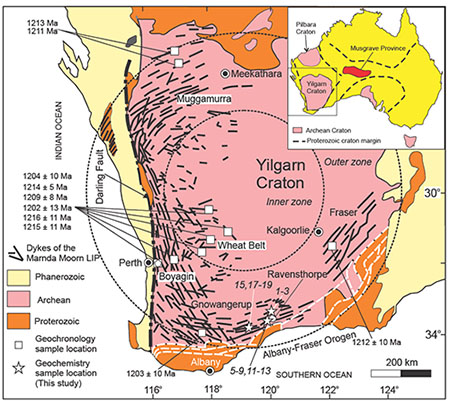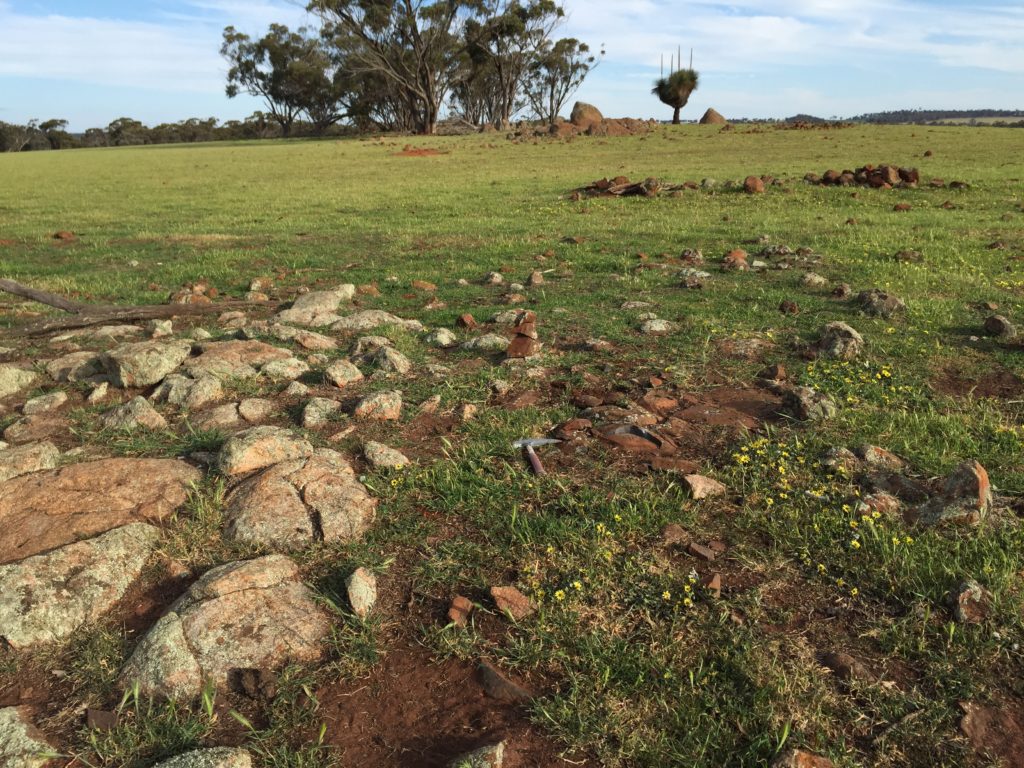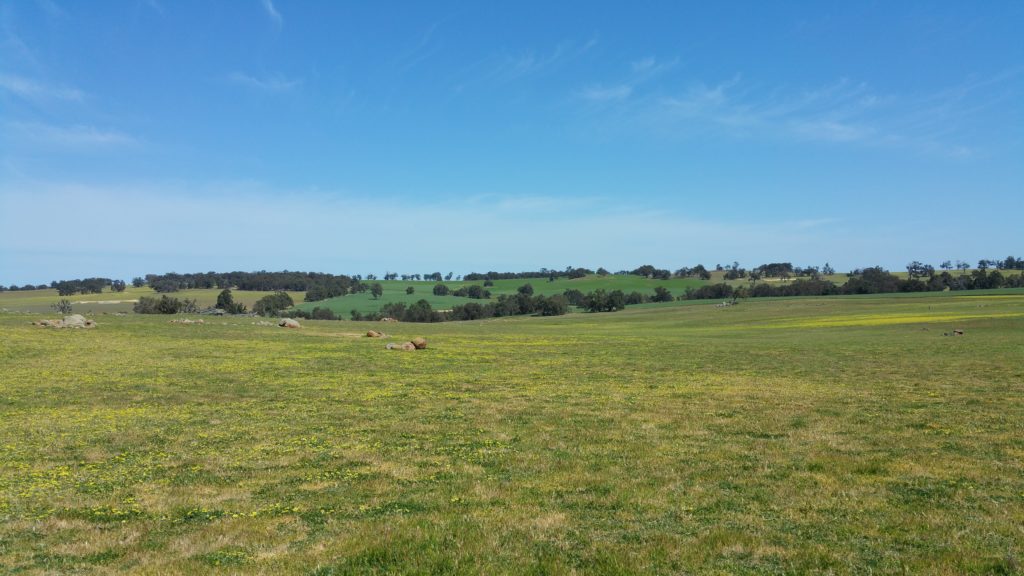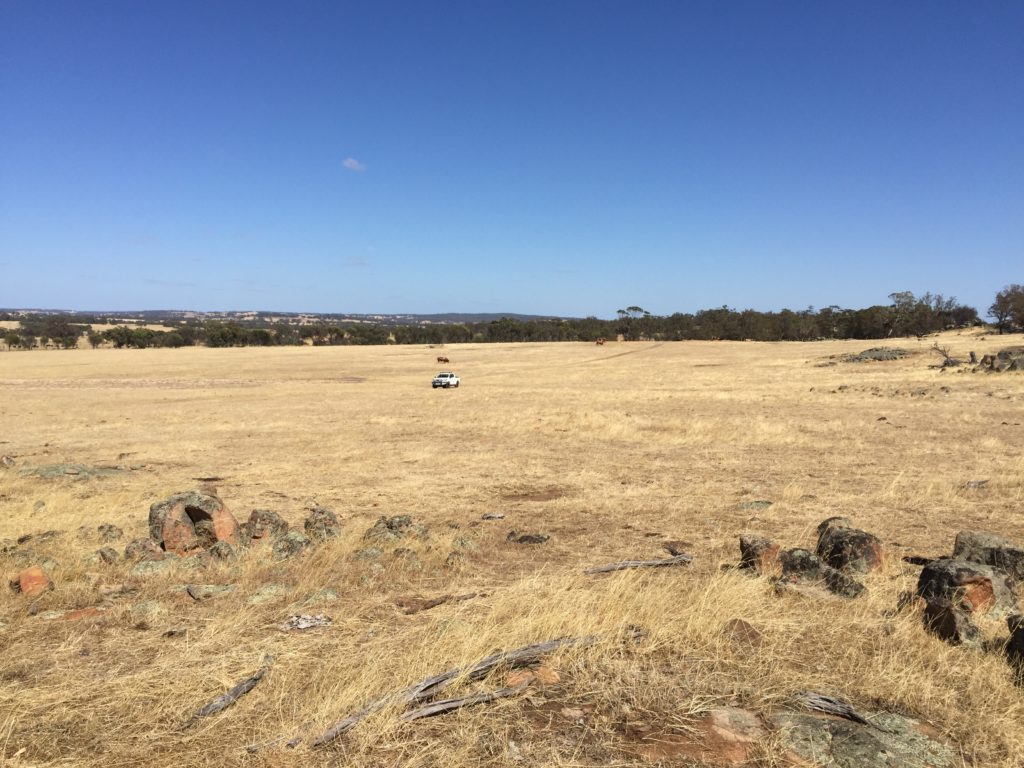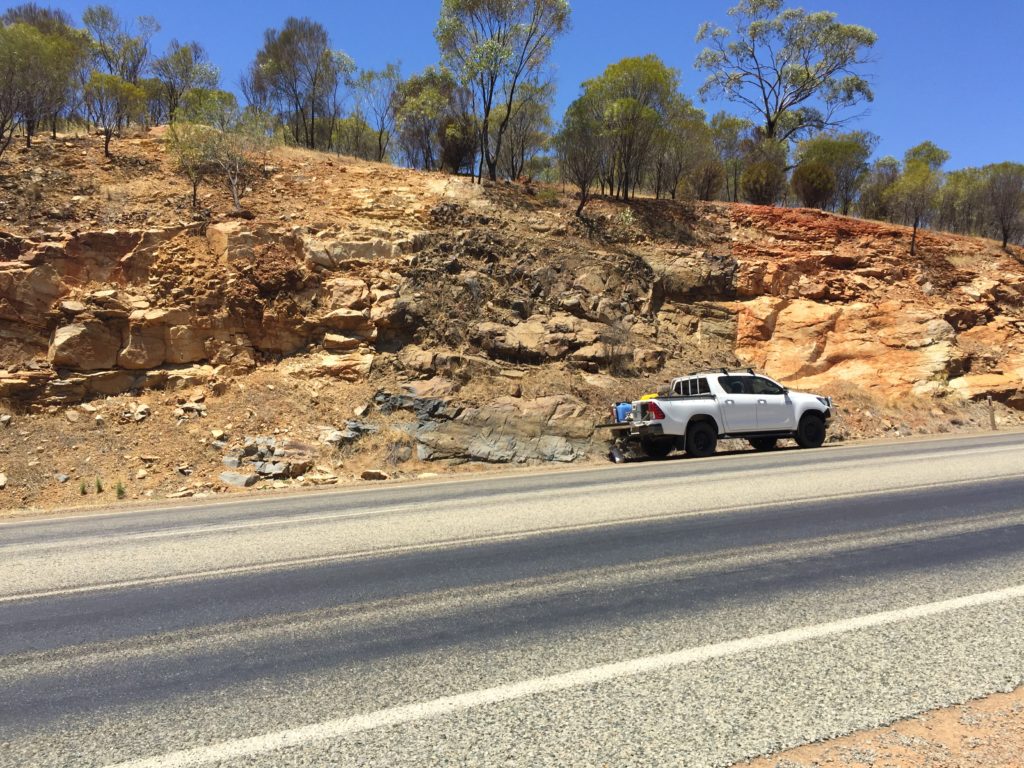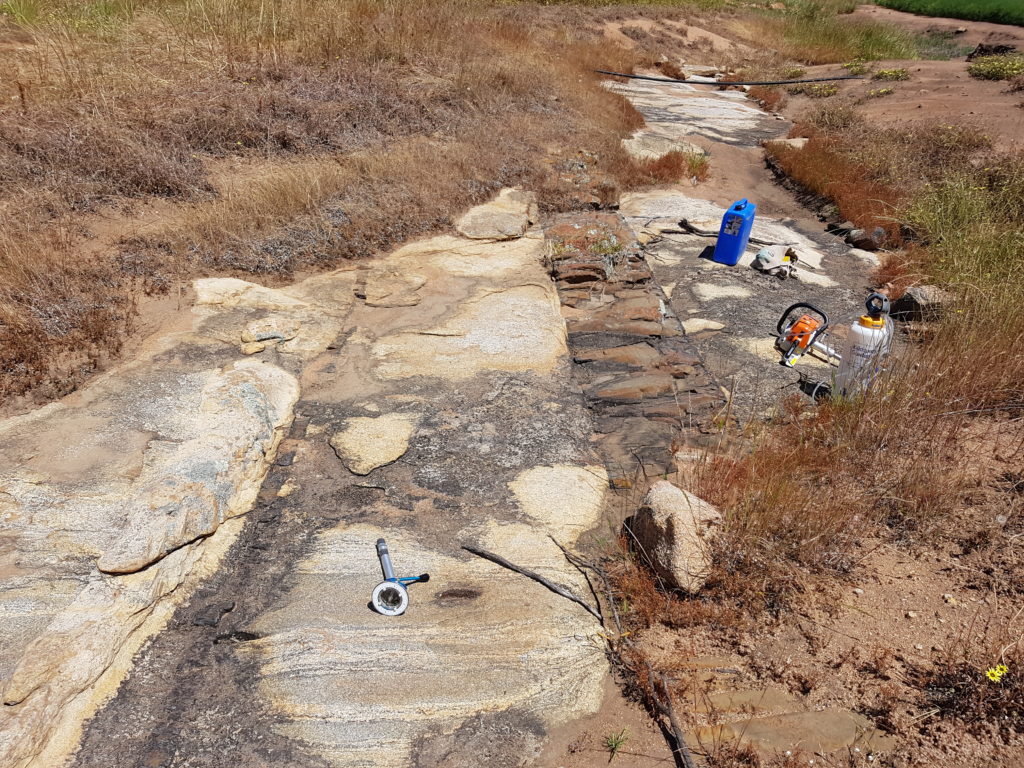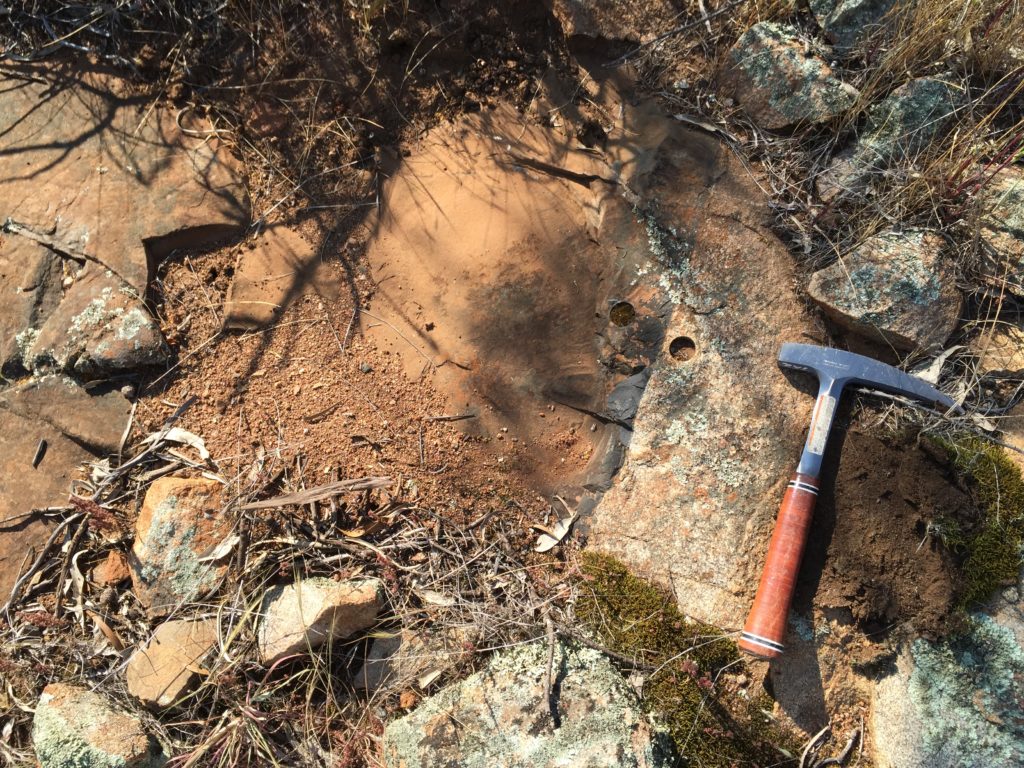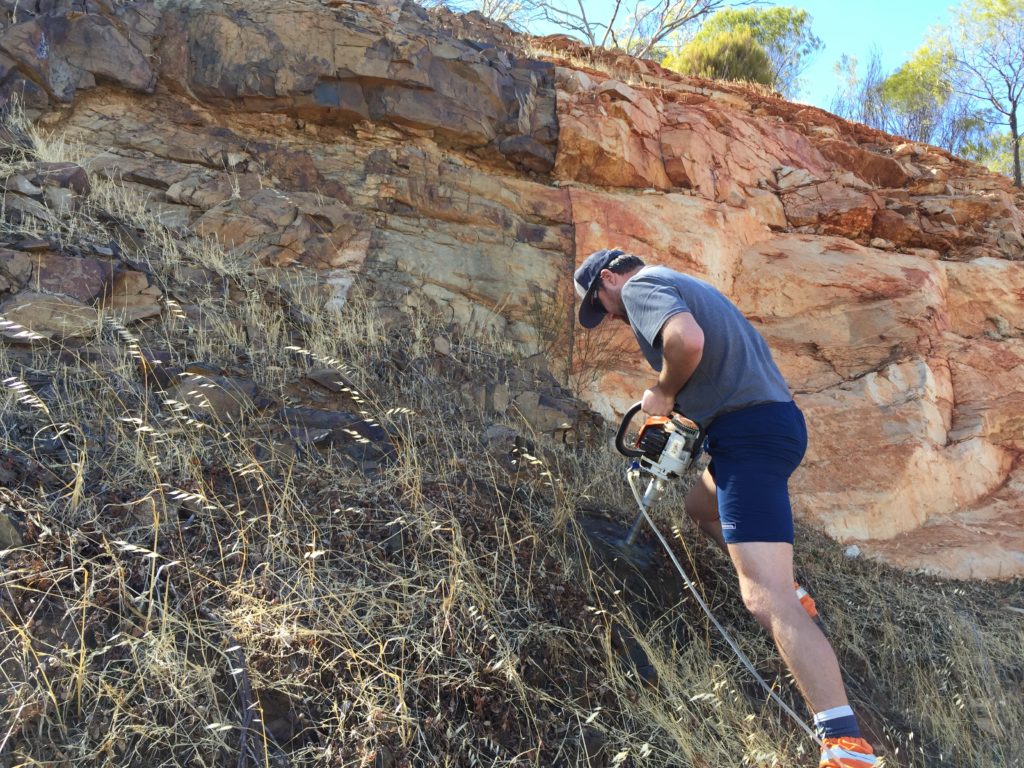Yebo Liu is a PhD candidate at Curtin University working with Professor Zheng-Xiang Li. You can read more about his research here.
The Yilgarn Craton, the largest Archean continental nuclei of Australia and one of the oldest continental blocks on Earth, is intruded by numerous mafic dykes, which are ideal recorders of palaeomagnetic signals because they are routinely datable, cool fast and sort of being protected by the host rocks from weathering. Southwestern Yilgarn craton has a particularly dense network of dyke intrusions with various trends, which sounds like a dreamland for paleomagnetists, but the actual situation is a little bit different.
A reconnaissance study in the mid-80s found at least six different generations of dykes in this area and suggested their ages could be of Paleo-Mesoproterozoic. Successful isolation of the primary magnetic signal of these dyke has the potential to fill some gaps of the Australia paleomagnetic database, which can hopefully shed some light on the problems of when and how did proto-Australia come together as well as the debating issues of supercontinent Nuna/Columbia.
Prof. Zheng-Xiang Li, my supervisor, conducted sampling trip in this area 26 years ago and analyzed samples from 14 dykes but only published part of the data. This project is a continuation of the unfinished work.
When I started to work in the Yilgarn Craton, mafic dykes in my mind are some blackish rock bands striped on the light-coloured Yilgarn granites, with clear trends and sharp margins, like what one would see in geology textbooks. With this striking contrast, how hard can it be to spot a few dykes in the field? Soon, however, I realized that I was being overly optimistic. Due to the lack of an effective erosion mechanism, the exposures of the dykes in southwestern Yilgarn craton are not terribly good. With weathered surface covered by some sorts of mosses, a typical mafic dyke in this area looks just like the host rock. You would need to wield your hammer to find out what really lies under the disguise.
To make things even more difficult, almost all of the dykes in this area are in farmlands, which means we need to ask the owners for permissions. It’s not an unpleasant thing to talk to the friendly, hard-working farmers, some of them can even show you the locations of better outcrops. It’s just when you spend one-third of your time in the field trying to hunt down the farmers and get permissions, things can get a bit frustrating.
Despite all that, field trips in this area are still very enjoyable. While the flat wide-open lands always allow you to have a panoramic view, yet they are never monotonous.
And of course, nothing is more exciting than finding beautiful dolerite dykes. For paleomagnetists, road cuts and creek outcrops are the best as they are in situ and usually fresh. Even though it’s rare that a creek or a road actually cut through a dyke, we managed to find several such outcrops.
![]() This work is licensed under a Creative Commons Attribution-NonCommercial-ShareAlike 4.0 International License.
This work is licensed under a Creative Commons Attribution-NonCommercial-ShareAlike 4.0 International License.

